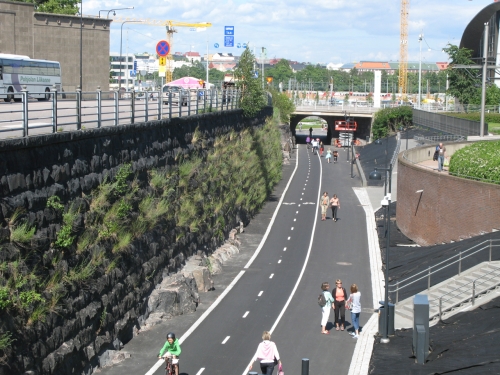It’s been a wonderful summer and August is shaping up to be just as happy and as busy as it always is.
You know, in Helsinki the weather matters, the length of the days matter. Life is lived in pulses and rather precise rhythms. For instance the whole country has been on holiday for all of July. Not for Finland the “constant er*ction” that early 21st-century global business expects of its workers, (that naughty phrase is borrowed – from memory – from the shockingly lazy Corinne Maier).
Maybe.
Like so many other Helsinkians in August, JHJ has taken overseas visitors to the top of Torni. As seen from here, a phone mast, an old fire station punctuate the pleasant rhythm of Helsinki’s unique late-summer cityscape.
In Helsinki’s August this year the world design capital machinery is ratcheting up its programme a notch. Many of us are waiting for (or preparing for) the Helsinki Festival. And many, many lovely, quirky, late-summer-happy Helsinkians who like doing things in town (read all about it here) are taking advantage of the still-gorgeous weather to DIWO (do it with others).
JHJ is loving it and the visitors are suitably, slightly, pleasantly awed as they point their cameras to horizons still visible over Helsinki’s rooftops.
But while the thousands of Helsinkians just mentioned are busy “unlocking” shared energies, there are those who are quietly planning to lock up much more. I refer to the craze in the Planning Department for tall buildings. (JHJ wrote an earlier rant here, Lewism wrote sensibly about this last year.)
The grapevine tells JHJ that many, many built environment professionals are aghast at what’s in the pipeline. Similarly, the grapevine tells JHJ that younger built environment professionals in a relatively small job market are afraid to pronounce in public that they too are dubious about the radical – really radical – proposed increase in the height of Helsinki buildings.
In a city where the sun is such a precious thing that an entire month (and countless evenings of terassis before and after) must be devoted to it, what a topsy-turvy idea from the Planning Department to block it out.





 s to have a piece of unsurpassed Finnish design installed. We are referring, of course, to the over
s to have a piece of unsurpassed Finnish design installed. We are referring, of course, to the over 